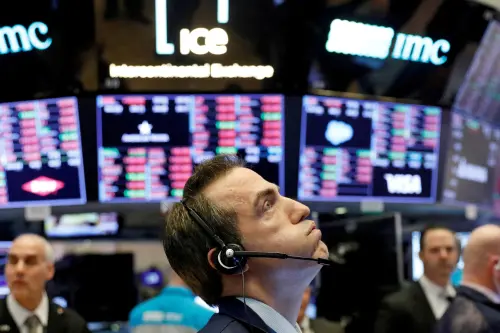Investors are increasingly seeking refuge from the volatile U.S. stock market by turning to a type of exchange-traded fund that provides a cap on potential gains in exchange for a buffer against potential losses.
In the last month, during a significant market pullback, "buffer" ETFs have experienced $2.5 billion in inflows, as per CFRA Research. Year-to-date, this category has attracted $4.7 billion in inflows, coinciding with a 6% decline in the S&P 500 stock index.
Following Monday's largest drop in the S&P 500 this year, buffer ETFs attracted $140 million in net assets, according to CFRA.
Financial planner Dinon Hughes from Nvest Financial in New Hampshire began transitioning some client stock holdings into buffer ETFs last year as a precaution against market volatility and sell-offs amid rising equity valuations.
These buffer ETFs, offered by firms such as Innovator Capital Management, BlackRock, and Allianz Investment Management, protect investors from losses in market downturns by selling options that limit potential gains in exchange.
The level of potential gains varies based on market conditions, with higher volatility resulting in reduced upside potential, reflecting the trade-off between profits and protection.
Financial advisors like Hughes are increasingly turning to buffer ETFs to prevent clients from abandoning stocks during turbulent market environments.
A recent survey found that 82% of advisors are more concerned about stocks than any other asset class, emphasizing the growing interest in defensive strategies like buffer ETFs.
The total assets in buffer ETFs reached $64 billion by the end of February, up from $38 billion at the close of 2023, with projections suggesting a significant increase in inflows for these funds throughout the year.
It is crucial, as highlighted by experts like Matthew Bartolini, to have defensive strategies integrated into investment portfolios to prepare for market movements rather than attempting to predict them.
Financial advisors, including Stuart Chaussée, have been reallocating client assets into buffer ETFs as a way to maintain exposure to potential market gains while mitigating downside risks during periods of high valuations.
However, some experts like Nathan Garrison caution investors about the trade-offs associated with buffer ETFs, such as limiting gains and incurring potentially higher fees compared to traditional index or actively managed ETFs.
Amidst market uncertainties and rising volatility, it is essential for investors to carefully evaluate the risks and benefits of buffer ETFs before making investment decisions.
